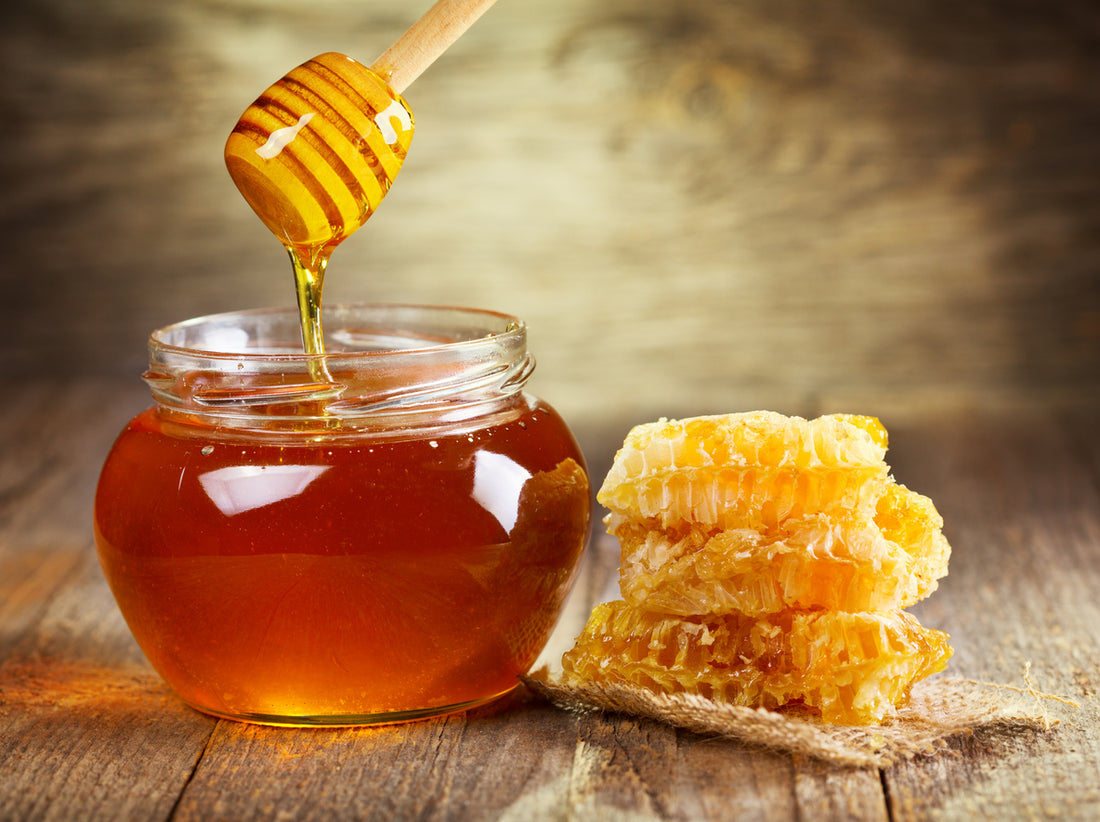Honey roasting is a culinary art that combines the natural sweetness of honey with the rich, toasted flavours of roasted foods. This delectable method of preparation has gained popularity for its ability to elevate the simplest ingredients, transforming them into golden, caramelised delights. From nuts and vegetables to meats and even fruits, honey roasting offers a versatile and flavourful way to create mouth-watering dishes. In this article, we will explore the origins, techniques, and benefits of honey roasting, as well as provide inspiration for incorporating this method into your culinary repertoire.
The Origins of Honey Roasting
The practice of using honey in cooking dates back thousands of years, with honey being one of the earliest natural sweeteners known to humanity. Ancient civilisations, such as the Egyptians, Greeks, and Romans, prized honey for its sweetness, preservation properties, and medicinal qualities. While roasting as a cooking technique was equally ancient, the fusion of honey and roasting likely evolved as cooks sought to enhance the depth of flavours in their dishes.
Honey roasting is thought to have gained significant traction in the modern culinary scene during the mid-20th century, when processed foods began to incorporate honey as a natural sweetener. This period saw the rise of honey-roasted peanuts, which remain a beloved snack worldwide. Since then, the technique has expanded to encompass a wide range of ingredients, earning its place in both home kitchens and gourmet dining establishments.
The Science Behind Honey Roasting
Honey roasting relies on the caramelisation and Maillard reaction to create its distinctive flavour profile. When honey is exposed to high heat, its natural sugars undergo caramelisation, breaking down and forming complex flavours that are sweet, nutty, and slightly smoky. Additionally, when honey interacts with the proteins in foods like nuts or meats, the Maillard reaction occurs, producing a savoury, umami-rich taste that balances the sweetness of the honey.
This interplay of sweetness and savouriness makes honey roasting a dynamic cooking technique. The natural acidity in honey also acts as a tenderiser for proteins, making it an excellent choice for meat marinades. Moreover, the sticky consistency of honey helps to create a glaze that locks in moisture, ensuring that roasted dishes remain succulent.
Techniques for Honey Roasting
Honey roasting can be approached in various ways, depending on the ingredient and desired outcome. Here are some essential techniques to master:
1. Choosing the Right Honey
The type of honey you use can significantly influence the flavour of your dish. Floral honeys, like lavender or orange blossom, impart delicate, aromatic notes, while darker varieties, such as buckwheat honey, add robust, molasses-like undertones. Selecting high-quality, raw honey ensures a purer and more complex flavour.
2. Preparing the Ingredients
Whether you’re working with nuts, vegetables, or meats, proper preparation is key. For nuts, ensure they are evenly coated with a mixture of honey and optional seasonings. Vegetables should be washed, trimmed, and lightly oiled before adding honey, while meats can be marinated in a honey-based glaze for several hours to enhance flavour and tenderness.
3. Balancing Flavours
Honey’s sweetness should be balanced with complementary flavours. Ingredients like soy sauce, mustard, citrus juice, or spices such as cayenne pepper and cinnamon can add depth and contrast. Experimenting with sweet, sour, salty, and spicy elements can yield a harmonious dish.
4. Optimal Roasting Conditions
Honey-roasted dishes should be cooked at moderate temperatures, typically between 160°C and 190°C (320°F to 375°F). This prevents the honey from burning while allowing it to caramelise gradually. Using parchment paper or a silicone baking mat can also help to minimise sticking and facilitate easy cleanup.
5. Timing and Observation
Roasting times vary depending on the ingredient. Nuts may require only 10–15 minutes, while vegetables and meats may take 20–40 minutes. Regularly checking and stirring ensures even caramelisation and prevents scorching.
Popular Honey-Roasted Creations
The versatility of honey roasting means that it can be applied to a wide array of foods. Here are some popular examples:
1. Honey-Roasted Nuts
Honey-roasted nuts, such as almonds, cashews, and peanuts, are a timeless snack. These crunchy treats are often seasoned with a pinch of salt, cinnamon, or chilli powder to create a moreish combination of sweet and savoury flavours. They’re perfect for parties, picnics, or as a homemade gift.
2. Honey-Roasted Vegetables
Root vegetables, such as carrots, parsnips, and sweet potatoes, shine when honey roasted. The natural sugars in these vegetables caramelise alongside the honey, enhancing their earthy sweetness. Adding a sprinkle of rosemary or thyme elevates the dish further, making it an ideal side for roast dinners.
3. Honey-Glazed Meats
Chicken, pork, and salmon are particularly well-suited to honey roasting. A glaze made from honey, soy sauce, garlic, and a splash of lemon juice creates a sticky, flavourful crust. These dishes are often paired with rice or roasted vegetables for a complete meal.
4. Honey-Roasted Fruits
Fruits like peaches, pears, and figs take on a luscious quality when honey roasted. Served with a dollop of yoghurt or a scoop of vanilla ice cream, they make for an elegant dessert that highlights the natural sweetness of the fruit.
Benefits of Honey Roasting
Honey roasting is not only delicious but also offers several benefits:
1. Nutritional Value
Honey contains trace amounts of vitamins, minerals, and antioxidants. While some nutrients are lost during cooking, the caramelised honey still adds a healthier dimension compared to refined sugars. Additionally, honey-roasted dishes often require minimal added fats, making them a lighter alternative to frying.
2. Versatility
The adaptability of honey roasting means it can be tailored to suit dietary preferences and seasonal ingredients. It works equally well for sweet and savoury dishes, making it a versatile technique for home cooks and professional chefs alike.
3. Enhanced Flavour
The combination of caramelisation and the Maillard reaction creates layers of complex flavours that are difficult to replicate with other cooking methods. Honey roasting adds depth and sophistication to simple ingredients.
4. Aromatic Appeal
The aroma of honey roasting is irresistible, filling the kitchen with a warm, inviting scent. This sensory experience adds to the pleasure of preparing and serving honey-roasted dishes.
Tips for Perfect Honey Roasting
To achieve the best results with honey roasting, keep these tips in mind:
- Use Fresh Ingredients: High-quality, fresh ingredients provide the best canvas for honey roasting.
- Don’t Overcrowd the Pan: Spread ingredients in a single layer to ensure even roasting and caramelisation.
- Monitor Closely: Honey can burn quickly, so keep an eye on your dish, especially during the final minutes of roasting.
- Experiment with Flavours: Don’t be afraid to try new combinations of spices, herbs, and additional sweeteners.
- Store Properly: Honey-roasted items, like nuts, should be stored in an airtight container to maintain freshness.
Honey roasting is a delightful cooking method that brings out the best in a variety of ingredients. Its unique blend of sweetness and savouriness, coupled with its ability to create visually stunning and aromatic dishes, makes it a favourite among culinary enthusiasts. Whether you’re preparing a simple snack or a show-stopping main course, honey roasting offers endless possibilities for creativity in the kitchen. By mastering this technique, you can elevate your cooking and enjoy the rich, golden flavours that honey roasting has to offer.

